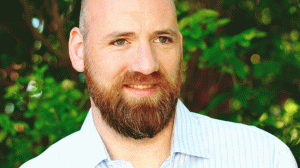Header: Efe Kurnaz via Unsplash
Which step in the recipe “5 steps to purpose” are you at right now? Are you yet to make a list or have you started experimenting after finding interesting intersections among your ideas? Or have you turned your passion into purpose already and if so, how does it all feel? If you got stuck, if you forgot you had started the process, or if you have no idea what I am referring to, I invite to you go back to my previous article “Aligning inner and outer purpose”, where I introduced the difference between “a primary purpose, which is your inner purpose and concerns Being and a secondary purpose, which is your outer purpose and concerns doing.” Today, I will continue my exploration around meaning to add more features and help you gain more clarity on your purpose.
Following a similar direction as Eckhart Tolle’s inner and outer purpose (cf. A new Earth: Awakening to your life’s purpose by Eckhart Tolle), the “father” of positive psychology, Martin Seligman, defines a life with meaning one where you contribute to something greater than yourself, where you transcend beyond immediate concerns. What does this mean practically though? Let me turn to another book to seek clarity and simplicity: 10 Keys to Happier Living: A Practical Handbook for Happiness by Vanessa King. The book advocates for 10 elements essential to happiness, summarised with the acronym GREAT DREAM (Giving, Relating, Exercising, Awareness, Trying Out, Direction, Resilience, Emotions, Acceptance, Meaning). The last key is, in fact, meaning.
[recommended:13594]
Vanessa King quotes Dr Michael Steger, one of the most prominent experts on the psychology of meaning, who offers a few questions to understand the three core elements of meaning:
- Significance • Do you feel your life is worthwhile and significant? This means feeling connected to something beyond yourself and feeling that what you do and who you are makes a difference.
- Comprehension • Does your life ‘make sense’ to you? Do the different parts fit together? This is about how you make sense of life, what it and you stand for, and how the different parts of your life connect.
- Purpose • Do you feel you have purpose? Do you have one or more overarching purposes or missions that you value? This is about what you’re motivated and striving towards at the highest level – your aims in life – which you aspire towards but can never really achieve.
Research shows that “people who feel they have meaning in life tend to experience more positive emotions; have a more positive outlook on the world and the future; higher life satisfaction and higher psychological well-being” (King). It also makes you more resilient as meaning gives you the strength, dedication, and perseverance you need to move past obstacles and to overcome challenges. “He who has a why to live for can bear almost any how,” said Nietzsche, as cited by Viktor Frankl in Man’s Search for Meaning. How do you find your why?
If your vision is still foggy, here is another recipe to help you disperse the fog (or learn to navigate with limited visibility). “A picture says a thousand word” is an activity piloted by Dr Michael Steger, which invites you to use photography to access more creative and richer thoughts and feelings about your meaning. I invite you to try it both by yourself and with your team members because creative or significant work is one of the main sources of meaning in life. It is important you are aware of what gives meaning to your team members (and vice-versa), but it is even more essential that you move beyond your immediate concerns: What would happen if your team discovered its unique collective purpose in service of something greater than itself?
You can access the full guidelines here. The theme for the next month is Joyful June so the next blog post will look at ways to cultivate joy through gratitude.
About Greta and Recipes for Wellbeing
 Greta Rossi is a changemaker involved in multiple not-for-profit initiatives, including Recipes for Wellbeing, Akasha Innovation, Pitch Your Failure, and ChangemakerXchange. Recipes for Wellbeing works towards shifting the culture of changemaking to include a focus on holistic wellbeing to enable anyone to contribute more effectively to creating positive change in the world. From freely accessible wellbeing recipes, through wellbeing talks and workshops, to immersive wellbeing labs, we make wellbeing accessible to changemakers and their teams. If you’d like to host a talk, workshop, or retreat for your team or organisation, reach out to us at info@recipesforwellbeing.org.
Greta Rossi is a changemaker involved in multiple not-for-profit initiatives, including Recipes for Wellbeing, Akasha Innovation, Pitch Your Failure, and ChangemakerXchange. Recipes for Wellbeing works towards shifting the culture of changemaking to include a focus on holistic wellbeing to enable anyone to contribute more effectively to creating positive change in the world. From freely accessible wellbeing recipes, through wellbeing talks and workshops, to immersive wellbeing labs, we make wellbeing accessible to changemakers and their teams. If you’d like to host a talk, workshop, or retreat for your team or organisation, reach out to us at info@recipesforwellbeing.org.










